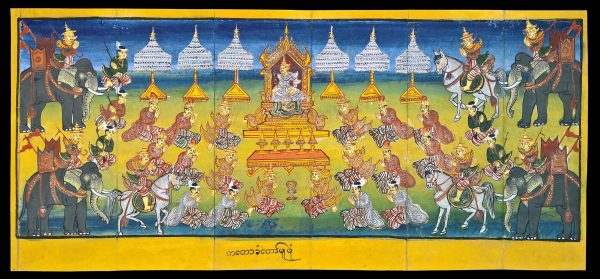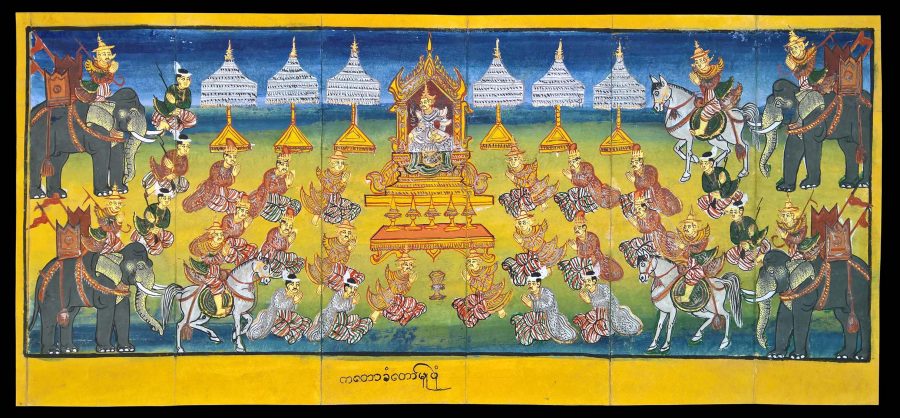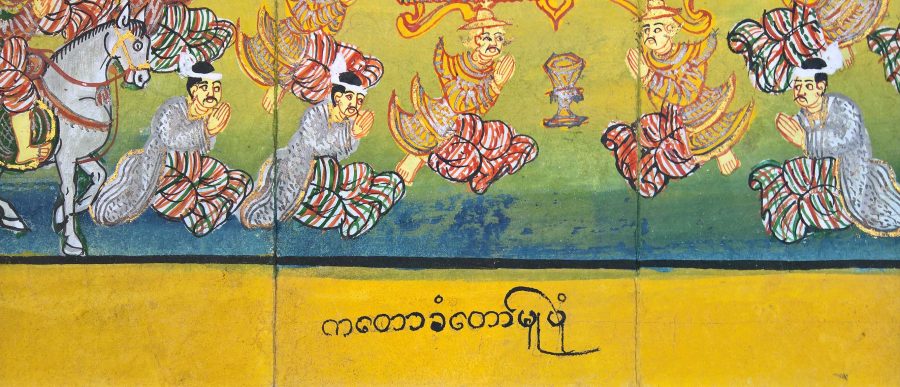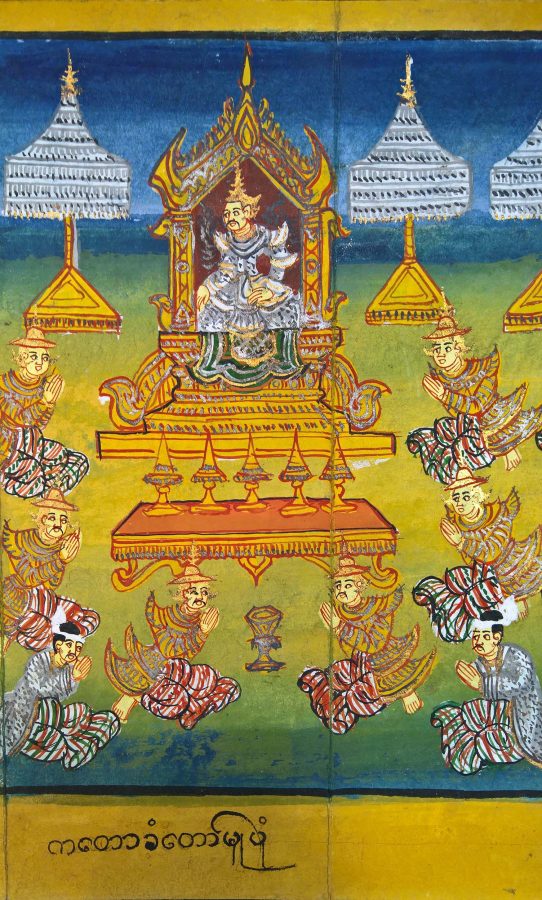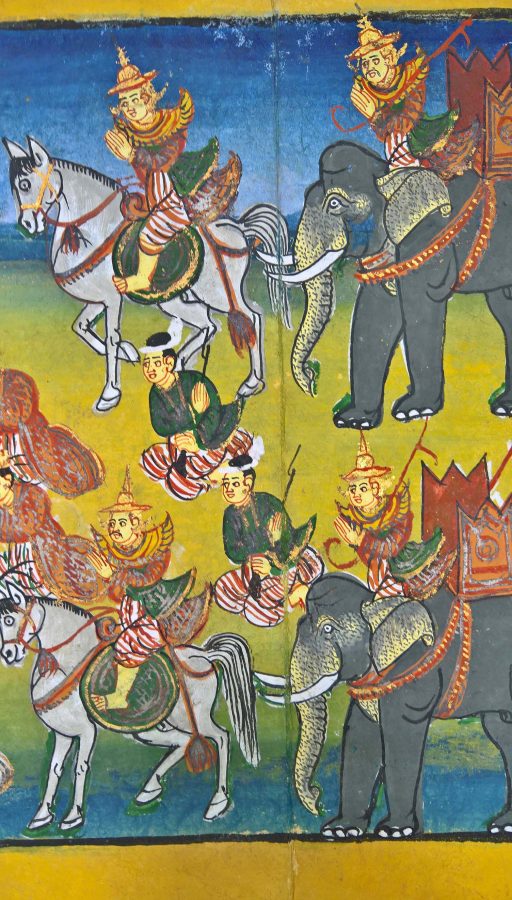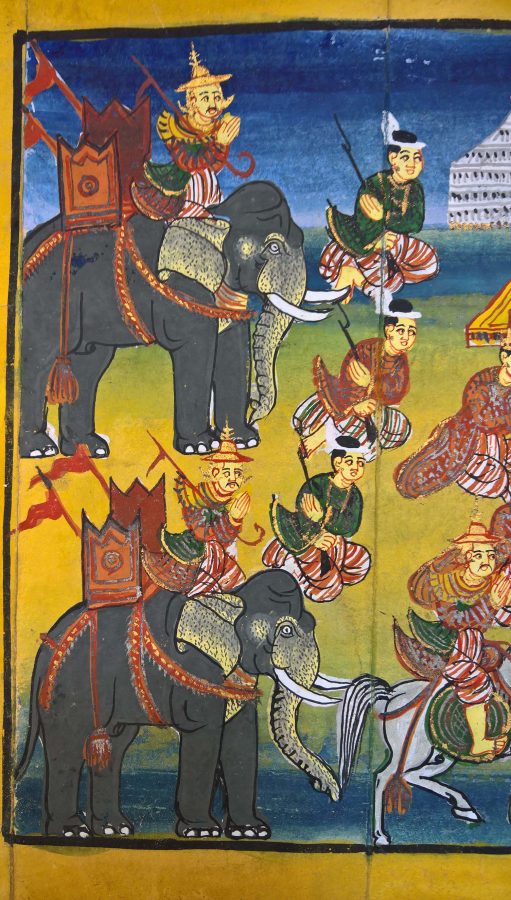This folded book or parabaik which comprises a single, long, rectangular piece of thick hand-made mulberry paper, is decorated on one side with a large court scene, and is plain on the other side, other than for a single cover panel that is coloured in orange and yellow.
It is painted in water-soluble pigments and has six folded panels. The scene shows a central king figure, enthroned. He is surrounded by obeisant courtiers, ministers and other princes, with four mounted elephants and three horses.
The scene includes white parasols, the symbol of royalty in Southeast Asia and ritual betel receptacles – part of the royal regalia.
The scene is surrounded by a yellow border and has a short line of Burmese script beneath.
The earliest known parabaiks date to the mid-18th century and seem to have originated mostly from Mandalay. Originally, they were made for patrons associated with the court, but later, they were also commissioned by wealthier Burmese, to mark special occasions and ritual events.
The example here is in excellent condition. Almost certainly, it has been in the UK since colonial times which would account for its excellent state of preservation.
References
Fraser-Lu, S., & D.M. Stadtner, Buddhist Art of Myanmar, Asia Society Museum, 2015.
Murphy, S. (ed.), Cities and Kings: Ancient Treasures from Myanmar, Asian Civilisations Museum, 2016.
Schafer, D., et al., Myanmar: von Pagoden, Longyis und Nat-Geistern, Museum Funf Kontinente, 2014.


